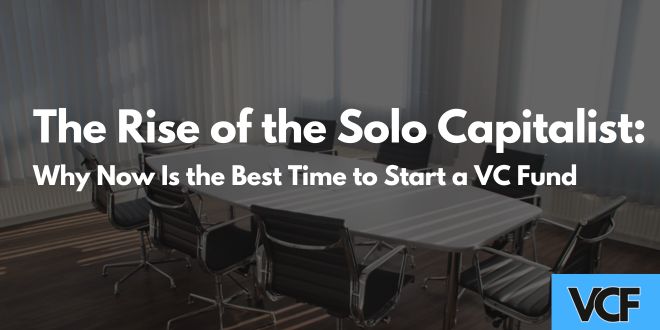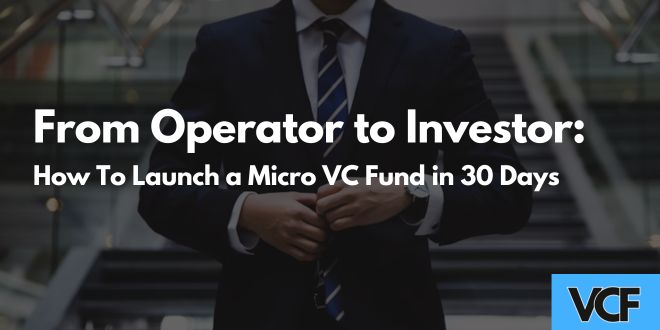If you follow Venture Capital Funding news even casually, you’ve probably noticed how often investors mention “SPVs” in the same breath as hot deals. A special-purpose vehicle (SPV) lets a small group of backers pool money for a single investment without forcing anyone to commit to a blind-pool fund.
For emerging managers, angels who syndicate deals, or founders investing alongside friends, an SPV can be the fastest route from “I love this company” to “our wire landed.” VCF.co, an end-to-end platform designed specifically for venture SPVs, handles a lot of the heavy lifting, but you’ll still want a clear roadmap. Below is a hands-on, human-tested guide that walks you from the first spark of an idea all the way to wiring funds and issuing K-1s.
Step 1: Nail Down Your Investment Thesis
Before you even open a browser tab, articulate why this deal deserves its own SPV. Write a one-pager that answers three questions:
- What does the company do and why does it matter right now?
- Why are you (and your co-sponsors) uniquely qualified to win the allocation?
- How big is the potential outcome?
A crisp thesis will help you recruit investors later, and will clarify whether an SPV is, in fact, the best structure for the opportunity.
Step 2: Assemble Your Core Team
An SPV feels lightweight, but it still requires adults in the room. Identify:
- A lead (usually you) who sources the deal and negotiates terms.
- A legal advisor familiar with Regulation D and venture docs.
- A back-office partner, VCF.co offers built-in administration, but someone still has to upload updates and approve wire instructions.
Tip: Schedule a 30-minute kickoff call so everyone aligns on timing, ownership, and costs.
Step 3: Choose the Right Vehicle Type
Most U.S. venture SPVs are structured as manager-managed Delaware LLCs filing as partnerships for tax purposes. Alternatives, such as offshore entities or a C-corp blocker, are possible if you have non-U.S. investors or tax-exempt LPs. Decide early; changing later is expensive. VCF.co’s onboarding wizard will ask simple “yes/no” questions to steer you toward the optimal structure.
Step 4: Open Your VCF.co Account
- Go to VCF.co and click “Create SPV.”
- Verify identity (driver’s license or passport).
- Connect a business bank account for future management-fee deposits.
- Invite co-managers, if any, so they have dashboard access from day one.
The platform spins up a deal room where legal documents, investor lists, and cap-table data live under one roof, no more hunting through eight Slack channels and a rogue Google Sheet.
Step 5: Draft Core Legal Documents
VCF.co provides templates, but reviews them with counsel. Key docs include:
- Operating Agreement: spells out carried interest, economic splits, and voting rules.
- Private Placement Memorandum (PPM): discloses everything material about the deal and the SPV itself.
- Subscription Agreement: the contract each investor signs, saying “Yes, I’m in.”
Don’t skim this step. A typo in the carry clause can haunt you five years later.
Step 6: Set Your Economics
Standard venture SPVs charge 20% carry and zero to 2% management fee (usually used only for organizational expenses). If you’re a first-time lead with a modest track record, consider lowering carry to 10-15% or offering early-bird discounts. VCF.co’s modeling tool shows how net returns change under different scenarios, playing with it before locking terms.
Step 7: Determine Minimum and Maximum Raise
Ask the company for its cap-table limits, then set a realistic target. Example: You have a $1 million allocation, so you might set a $250k minimum close and $1 million hard cap. Defining these numbers up front prevents awkward “we’re oversubscribed” emails later.
Step 8: Build Your Deal Page
Think of this as Kickstarter for accredited investors. Upload:
- A concise overview (remember that one-pager?)
- Founder bio links or short videos if you have permission.
- Term sheet highlights (valuation, security type, pro-rata rights).
- Use-of-proceeds bullets.
Compliance note: Stick to factual statements and avoid broad general solicitation unless you file under Rule 506(c). VCF.co flags potential violations but can’t read your mind.
Step 9: Soft-Circle Commitments
Before you hit “public,” ping likely LPs, angel buddies, family offices, syndicate members, and ask for soft commitments. Use a simple line: “We’re leading a $1 million SPV in Acme AI at a $20 million cap; can I pencil you in for 25k?” A good rule of thumb: aim for 60-70% of the target raise in soft commitments before the formal launch. It creates momentum and keeps the closing timeline sane.
Step 10: Launch and Collect Signatures
Once your page goes live, VCF.co automates:
- Accredited-investor verification (self-cert or third-party letter).
- E-signing of subscription docs.
- Wire instructions generated uniquely for each investor.
Check the dashboard daily to approve new subscribers and chase stragglers, nothing kills buzz like a three-week radio silence.
Step 11: First Close and Wire Funds
When you hit the minimum raise, initiate the first close. VCF.co aggregates the wires into the SPV bank account and issues a single outbound wire to the portfolio company. Send a celebratory update to investors: amount closed, date wired, next milestones. Transparency now breeds trust later.
Step 12: Ongoing Administration
VCF.co’s admin module handles cap-table updates, quarterly reports, K-1 tax forms, and pro-rata notices. Still, you must feed it data: new round pricing, board-meeting highlights, or unexpected pivots. Schedule a 15-minute calendar block each month to push updates. Future you will thank you when you’re juggling five SPVs.
Step 13: Prepare for Exits
Whether it’s a secondary sale, an acquisition, or an IPO lock-up, exit events arrive with paperwork. VCF.co walks you through distribution waterfalls, who gets what after expenses and carry. Before clicking “Distribute Proceeds,” re-read the operating agreement to confirm waterfall math, then communicate clearly with your LPs: gross proceeds, fees, net to them, carry to you. No one has ever complained about over-communication on wire days.
Common Pitfalls and How to Avoid Them
- Over-promising timeline: Tell investors 30-45 days to close; deliver in 20 if you can.
- Ignoring smaller checks: A dozen $5k backers can become key supporters in later deals. Treat them like the $500k LP.
- Skipping legal review: Yes, templates are great, but a lawyer’s 90-minute pass can save five-figure headaches later.
- Neglecting post-close updates: Investors remember silence. A quarterly note, even two paragraphs, keeps confidence high.
Frequently Asked Questions (Lightning Round)
Q: Do I need to be a registered investment advisor?
A: Most SPV leads rely on the venture-capital exemption under the Investment Advisers Act, but confirm with counsel.
Q: Can non-accredited friends participate?
A: Generally no, not under Rule 506(b) or 506(c). Crowdfunding exemptions exist, but they don’t mesh neatly with venture SPVs.
Q: How much does VCF.co charge?
A: Pricing varies by entity type and admin services, typically a flat setup fee plus a per-investor or per-year admin fee. Request a custom quote during onboarding.
Wrapping Up
Launching your first SPV might feel like a giant leap, but with the right blueprint and a platform like VCF.co, it’s closer to a well-marked hiking trail. You’ve learned how to craft a tight thesis, pick the proper structure, rally investors, and shepherd the deal through closing, all without drowning in spreadsheets or FedEx envelopes.
As the broader Venture Capital Funding landscape becomes more democratized, SPVs allow almost anyone with sharp deal flow and hustle to punch above their weight. Ready to test the waters? Open that new-tab window, start an account on VCF.co, and take the first concrete step toward turning opportunity into ownership. Good luck, and happy investing!







